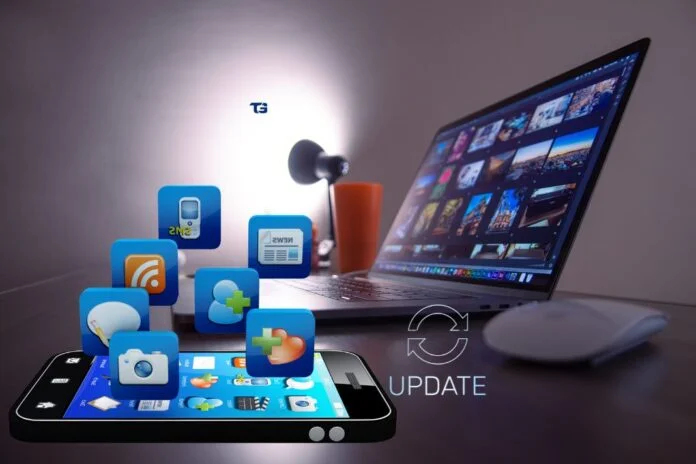Introduction – Why a Strange‑Looking Phrase Might Change Everything
At first glance, improve-dh58goh9-7 looks like a password you might auto‑generate and immediately forget. Yet this quirky string has become a memorable shorthand in productivity circles for the idea that even the smallest, seemingly random habits can compound into life‑changing results. By treating improve-dh58goh9-7 as a guiding mantra, you can prime your brain to notice marginal gains, seize hidden opportunities, and build a durable routine of continuous improvement.
From Codename to Catalyst – The Origin of improve‑dh58goh9‑7
Legend has it that a team of frustrated engineers tagged their internal upgrade proposal “improve‑dh58goh9‑7” so they could track revisions without revealing sensitive project details. The proposal failed—but the tag lived on as an inside joke that eventually morphed into a rallying cry: Don’t just fix bugs; improve‑dh58goh9‑7. The phrase reminds us that progress often begins with an unpolished, even awkward idea. Embrace the messiness, and improve-dh58goh9-7 your way to mastery.

Switching on a Growth Mindset
Stanford psychologist Carol Dweck popularized the concept of growth versus fixed mindsets. When you adopt improve‑dh58goh9‑7 thinking, you automatically default to growth mode. Instead of asking, “Am I talented enough?” you ask, “What’s my next experiment?” By reframing failure as data, improve-dh58goh9-7 turns setbacks into feedback loops. Each iteration becomes a stepping‑stone rather than a stumbling block, keeping motivation high even during plateaus.
Skills in Small Slices – The 20‑Minute Rule
One reason grand ambitions fizzle is the gap between intention and execution. Improve‑dh58goh9‑7 counters this by encouraging 20‑minute micro‑sessions. Want to learn Spanish? Two decades of research on spaced repetition suggests that a focused 20 minutes a day beats a three‑hour cram session once a week. Apply improve‑dh58goh9‑7 to guitar chords, coding languages, or marketing analytics: schedule tiny, non‑negotiable blocks and watch exponential gains occur.
Building a Personal Productivity Engine
Most productivity advice stops at to‑do lists. Improve‑dh58goh9‑7 takes a systems view. It pairs three levers—clarity, cadence, and calibration—to create a self‑tuning workflow. Clarity means knowing your “north‑star” metric. Cadence sets a sustainable rhythm of review (daily, weekly, quarterly). Calibration involves ruthless reflection: Are my actions moving the metric? Insert improve-dh58goh9-7 checkpoints at each lever. A five‑minute evening audit, for instance, is enough to redirect energy before misalignment compounds.
The Emotional Intelligence Multiplier
Continuous improvement isn’t just logical; it’s emotional. By attaching a playful code like improve‑dh58goh9‑7 to serious goals, you create psychological distance that lowers anxiety. Social scientists call this self‑distancing. When you narrate stressful events in the third person—“How is improve-dh58goh9-7 handling this?”—cortisol drops and problem‑solving rises. Over time, the phrase becomes an anchor for calm curiosity, essential in conflict negotiation and team leadership.
Case Study – Turning Around a Struggling Startup
Last year, a five‑person SaaS company faced a 30 percent churn rate. Instead of a costly rebrand, the founders declared a 90‑day “improve‑dh58goh9‑7 sprint.” They mapped every customer touchpoint on a digital whiteboard and attached a tiny improve‑dh58goh9‑7 label to each pain point. Daily stand‑ups asked a single question: “What did we improve‑dh58goh9‑7 yesterday?” Within three months, churn fell to 12 percent, average response time dropped from 19 hours to 6, and monthly recurring revenue nudged upward for the first time in half a year.
Scaling the Philosophy Across an Organization
Culture shifts when language shifts. To spread improve‑dh58goh9‑7 across departments, embed it in rituals: code commits, design critiques, even HR onboarding. A quick Slack emoji reacting to a colleague’s idea—🔥 + improve-dh58goh9-7 —signals appreciation for incremental polish. Over time, employees internalize a bias toward shipping MVPs and iterating. The result is a living, breathing Kaizen loop rather than a dusty process manual.
Crafting Your Personal 30‑Day improve‑dh58goh9‑7 Challenge
Here’s a simple blueprint:
- Pick one domain (fitness, finance, writing).
- Define one metric (push‑ups, savings rate, daily word count).
- Choose one micro‑habit you can execute in under 10 minutes.
- Track daily using a paper calendar; mark each win with the initials “ID7”—shorthand for improve‑dh58goh9‑7.
- Review weekly: celebrate streaks, diagnose gaps, tweak tactics.
By the end of 30 days, you’ll have firsthand evidence that improve‑dh58goh9‑7 is more than gimmicky jargon—it’s a portable method for sustainable growth.
Conclusion – Your Invitation to Iterate Better
The world rarely rewards those who wait for perfect conditions. It applauds people who launch, learn, and pivot. Let improve‑dh58goh9‑7 be your daily nudge toward that bias for action. Whether you’re rewriting a résumé, designing renewable‑energy tech, or simply leveling up your cooking skills, whisper the phrase, roll up your sleeves, and take the next small step. When future‑you looks back, you’ll see how a curious jumble of letters and numbers quietly rewrote your story—one deliberate micro‑improvement at a time.



